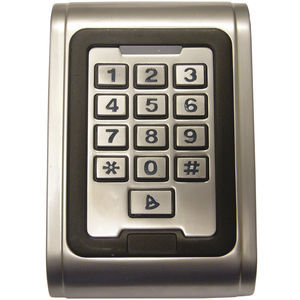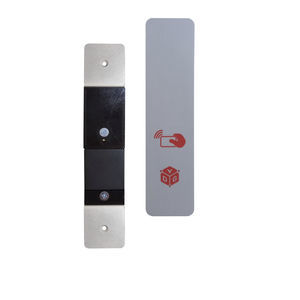- Building - Construction >
- Industrial Building Equipment >
- Smart card reader
Smart card readers
{{product.productLabel}} {{product.model}}
{{#if product.featureValues}}{{product.productPrice.formattedPrice}} {{#if product.productPrice.priceType === "PRICE_RANGE" }} - {{product.productPrice.formattedPriceMax}} {{/if}}
{{#each product.specData:i}}
{{name}}: {{value}}
{{#i!=(product.specData.length-1)}}
{{/end}}
{{/each}}
{{{product.idpText}}}
{{product.productLabel}} {{product.model}}
{{#if product.featureValues}}{{product.productPrice.formattedPrice}} {{#if product.productPrice.priceType === "PRICE_RANGE" }} - {{product.productPrice.formattedPriceMax}} {{/if}}
{{#each product.specData:i}}
{{name}}: {{value}}
{{#i!=(product.specData.length-1)}}
{{/end}}
{{/each}}
{{{product.idpText}}}

RFID USB READER MULTITOP MULTITOP is a well-designed RFID USB reader series for desktop applications. Various versions are available to support all different RFID ...

... Door Controller. Support for most smart card formats. 2 LED symbols give clearly visible feedback. Indoor and outdoor ready. IP65 classified. Powered by Assa Abloy. AXIS A4010-E ...

... being outsmarted. Scalability and modularity The Architect® readers are based on a smart common RFID core that can be connected to additional interchangeable modules: card ...

... weigand card reader and keypad also offers low power consumption (30mA standby). This waterproof weigand card reader and keypad may also be used stand alone for access ...


door lock, door position sensor, access control Traffic light indicators of multiple designs specifically designed for cleanrooms, locks, sensors, cables, custom made adhesive membranes. All in one to offer a complete door interlocking ...

... WEIGHT Appr. 350g CABLE LENGTH Appr. 1,8m DATA TRANSFER RATES Reader to Smart Card: up to 826 KBit/S Reader to System: USB 2.0 Full Speed (12 MBit/S) SMART ...
Your suggestions for improvement:

A smartcard reader captures data from the card's embedded chip, with or without contact. If authorized, it may write to the card's memory, but only readers with encoder functionality can transfer data to a blank card.
ApplicationsThese readers are currently used for personal identification: reading ID or medical insurance cards and access badges. They also handle payments by bank card or electronic purse. Contactless readers control pass access to public transport or parking lots.
TechnologiesMost payment readers incorporate a keypad for entering the card-owner's code. Digital data is exchanged with the card's microprocessor in a secure environment. Smartcards are asynchronous, i.e., memory access is controlled by the microprocessor, in contrast to a memory card.
Data transfer may be by contact with the chip or by radio frequency transmission. Most adhere to near-field communication (NFC) standards. RF reading requires that the card be very close to the reader, implying a voluntary act on the part of the card owner. The reader may be linked to a computer by Ethernet or USB cable, or via a wireless system.
Choice will depend on reader function: simple or with encoding capability, contact or contactless.
Receive updates on this section every two weeks.
Please refer to our Privacy Policy for details on how DirectIndustry processes your personal data.
- Brand list
- Manufacturer account
- Buyer account
- Our services
- Newsletter subscription
- About VirtualExpo Group









Please specify:
Help us improve:
remaining